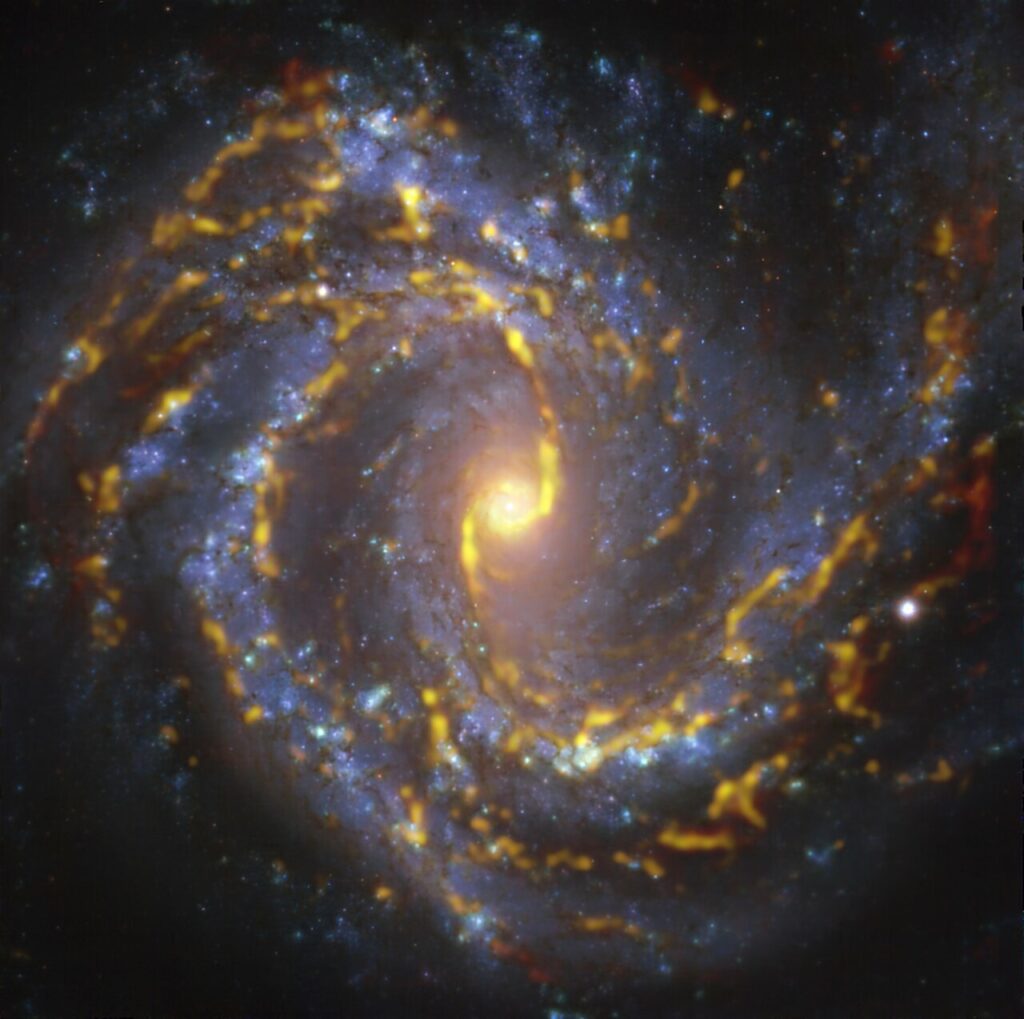The staff of the European Southern Observatory published an image of the galaxy NGC 4303. It was obtained during observations made by the Very Large Telescope (VLT) and the ALMA Radio Observatory.

NGC 4303 is located at a distance of 55 million light-years from Earth in the direction of the constellation Virgo. Like our Milky Way, it has a spiral structure. At the same time, there are a number of notable features between the objects. For example, NGC 4303 has an active core and at the moment there is an outbreak of star formation in it. In addition, at least eight supernovae have flared up in the galaxy over the past century.
New NGC 4303 stars don’t form out of nowhere. The raw materials for them are clouds of molecular gas. The radiation of which was recorded by ALMA. They are indicated in gold. The bluish areas in the background correspond to already formed stars. Their image was obtained using a MUSE receiver mounted on the VLT.
The NGC 4303 image was taken as part of the PHANGS review. Its participants make observations of nearby galaxies with high resolution using telescopes that record radiation in different ranges of the electromagnetic spectrum. This allows us to learn about the physical properties of the luminaries, gas and dust located in them. Comparing the data obtained in this way, astronomers are trying to understand what activates, accelerates or slows down the birth of new stars.
Earlier, we published a VLT photo of the galaxy UGC 4211. It is home to the closest pair of supermassive black holes.
According to https://www.eso.org
Follow us on Twitter to get the most interesting space news in time
https://twitter.com/ust_magazine

